
A butterfly count has been conducted each year here in Los Alamos for the past 20 years.
A group of butterfly counters spend a Saturday at Burnt Mesa, the Valle Canyon and Camp May.
They spread out at each location, carefully looking for butterflies to catch with their nets.
Each of the locations has a different environment.
Is there a better way to explore Nature than on a sunny Saturday in July?
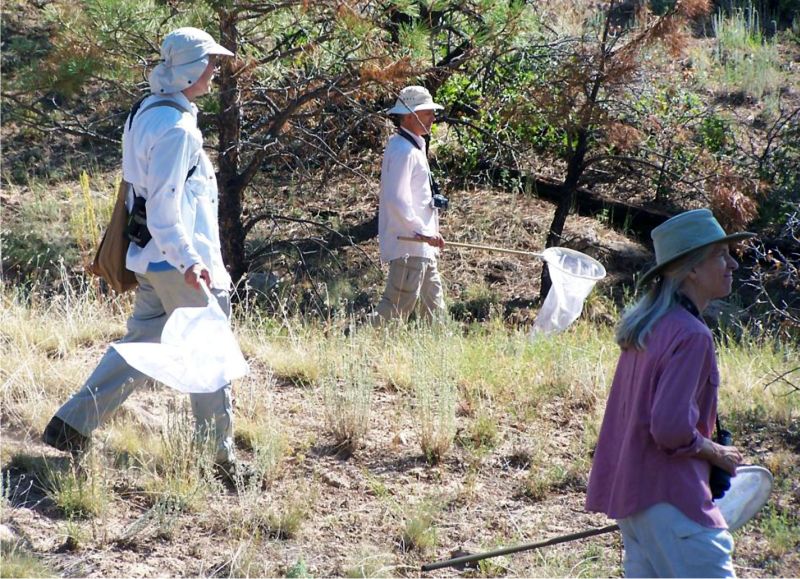 Intrepid Butterfly Counters. Courtesy photo
Intrepid Butterfly Counters. Courtesy photo
The Burnt Mesa had a forest fire pass through thirty five years ago in 1977. Its butterfly population reflects the ongoing transition from the grasslands immediately following the fire to the emergence in recent years of ponderosa pine and scrub oak.
The mesa is relatively flat and open in terms of its geology. It is an open park with plenty of space in which to glide if you are butterfly.
The Valle Canyon is forested with more mature ponderosa pine. However the recent Cerro Grande and Las Conchas fires have burnt sections of it. The stream through it is now eroded with silt. Butterflies species can be territorial, typically remaining in one area.
The monarch butterfly is the exception, migrating from Mexico across the North American continent. The Valle Canyon acts as an areal highway to the high country if you are butterfly and want some help in going up or down the canyon in your territory.
As air warms during the day, the air rises up the canyon and carries butterflies with it toward the Valle Grande. Alternatively, cool air from the Valle Grande can bring butterflies down the canyon.
A butterfly collector at the right location may have a butterfly pass every few minutes.
Camp May represents the high alpine country for butterflies. It is cooler than the other two areas. Meadows occur between stands of mature ponderosa.
There is much more moisture here, benefiting both trees shrubs and grasses. A variety of meadow flowers are available with nectar in late July for butterflies.
Because of the different environments it is not surprising to have different species of dominate each area. Also the diversity of species may vary.
The butterfly collectors captured 37 butterflies at Burnt Mesa. These represented four species.
However one single species accounted for 31 one of the 37 butterflies. The Dainty Sulfur (Nathalis Iole) clearly is dominant here, at least for this year.
Thirty six butterflies were caught at Valle Canyon or the nearly same number as at Burnt Mesa. However, there were 11 different species here and two species tied for first place.
Six Two-tailed Swallowtail (Papilio multicaudata) along with six Sleepy Orange (Eurema nicippe) butterflies fluttered by every few minutes.
Forty four butterflies were caught at Camp May. Eleven species also were represented. The Orange Sulfur (Colias eurytheme) butterfly dominated with 15 of the 44 specimens being Orange Sulfur butterflies.
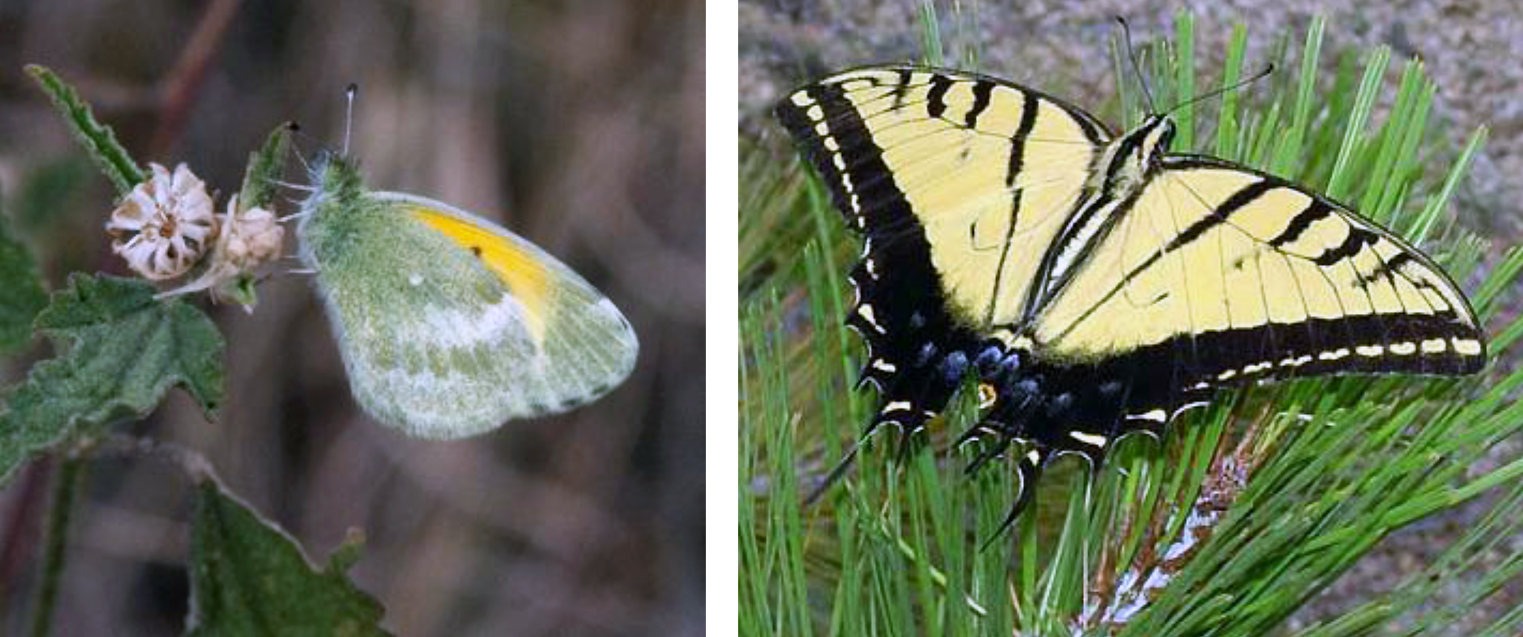
Dainty Sulfur Two-tailed Swallowtail
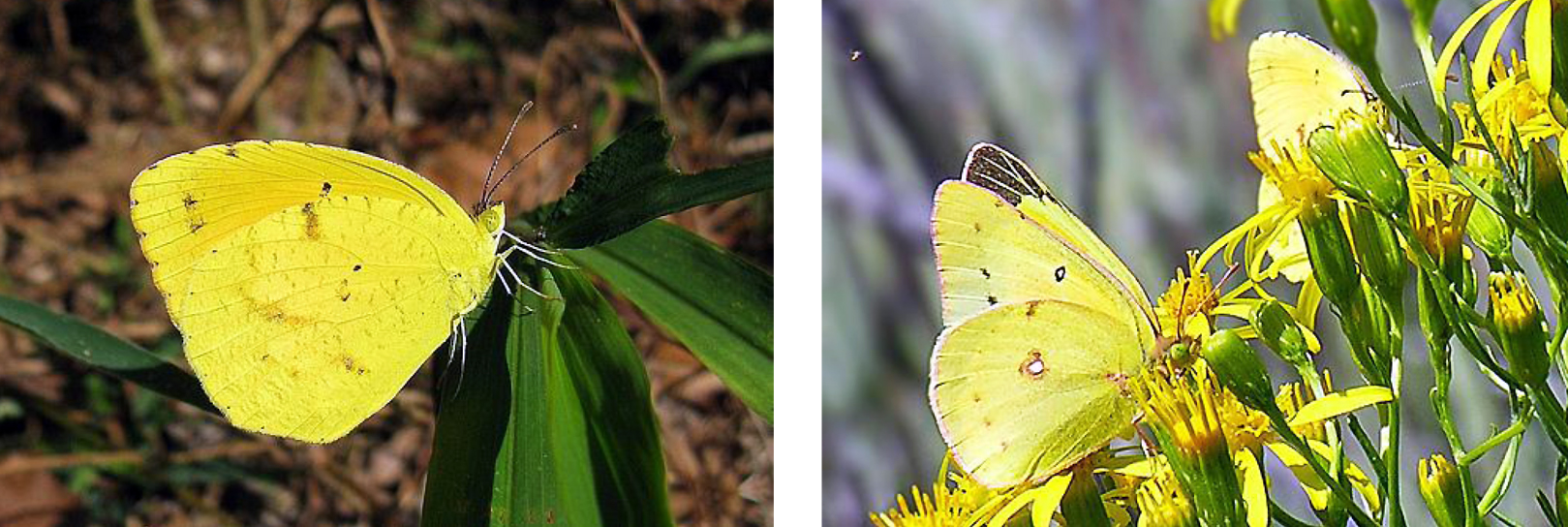
Sleepy Orange Orange Sulfur
Seeing butterflies can be difficult when they are not moving. Their color patterns blend with the plants they are sitting upon.
For example, can you easily see the butterfly in the following picture? If this normal view is enlarged, then the butterfly becomes apparent.
Many species of butterflies have two patterns of coloration depending on whether their wings are close or open. A butterfly may look more like a dry leaf when its wings are closed and sitting still.
It is now camouflaged. However, a butterfly of a different color appears when its wings are opened. Other butterflies now can see it more easily as it advertises it presence while flying.
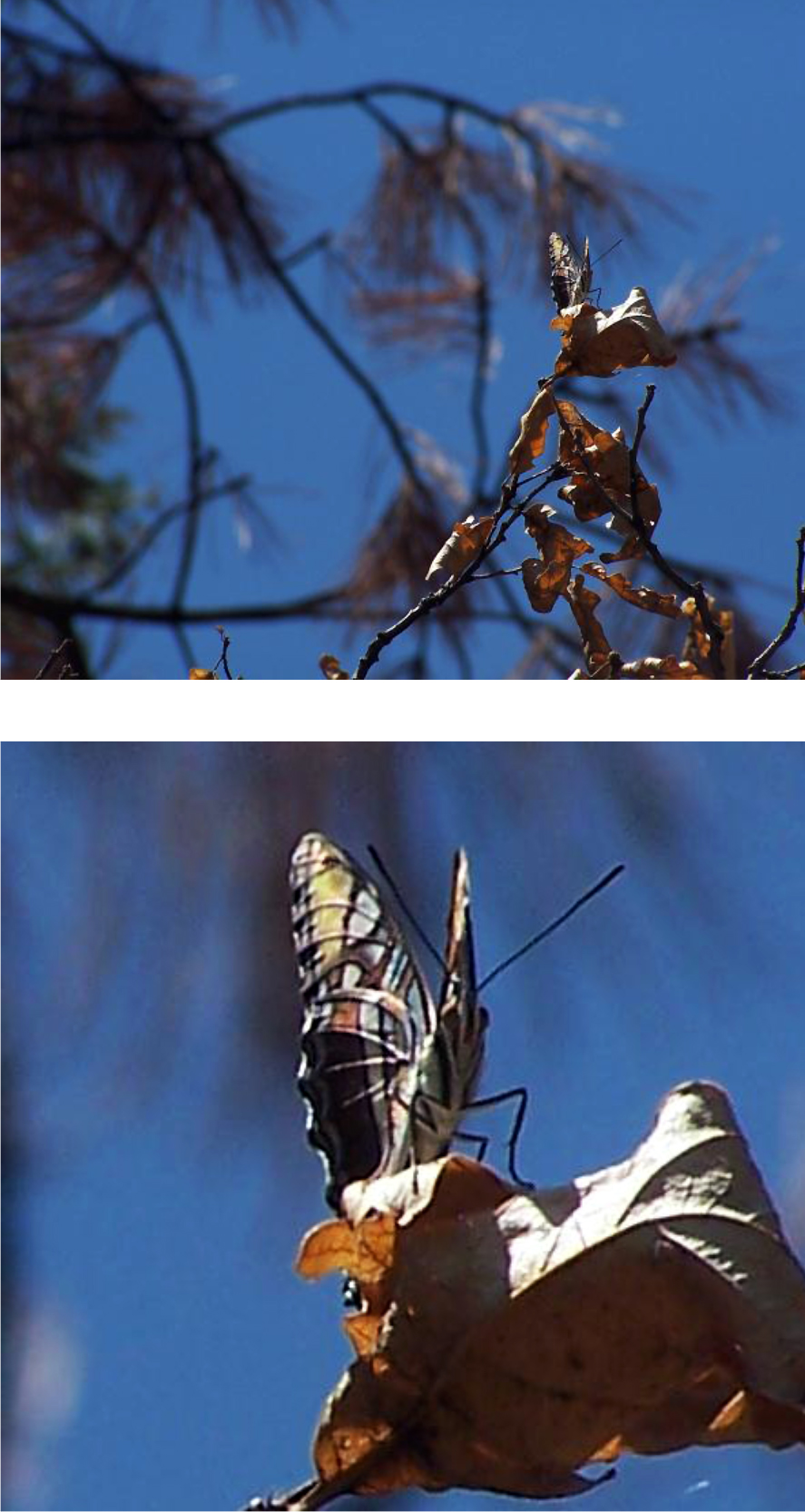 Where is that butterfly?
Where is that butterfly?
Ah, there it is on top of the leaf.
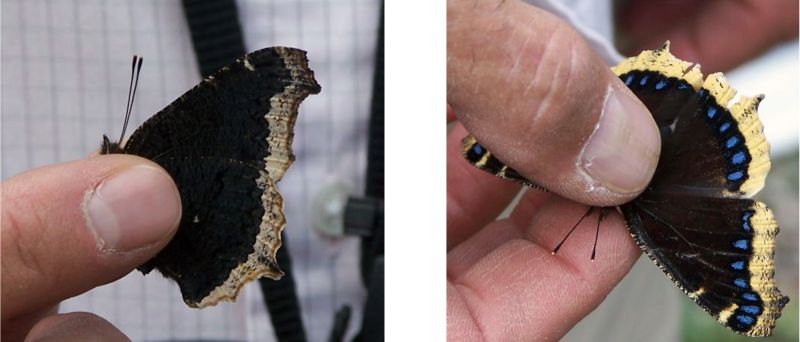
Closed wings Open wings
Butterflies have a survival strategy if caught but not harmed. They now may play possum. Instead of immediately fluttering about and attracting attention, a butterfly may sit quietly in your hand for several minutes. You may have to shake your hand to encourage it to fly away.
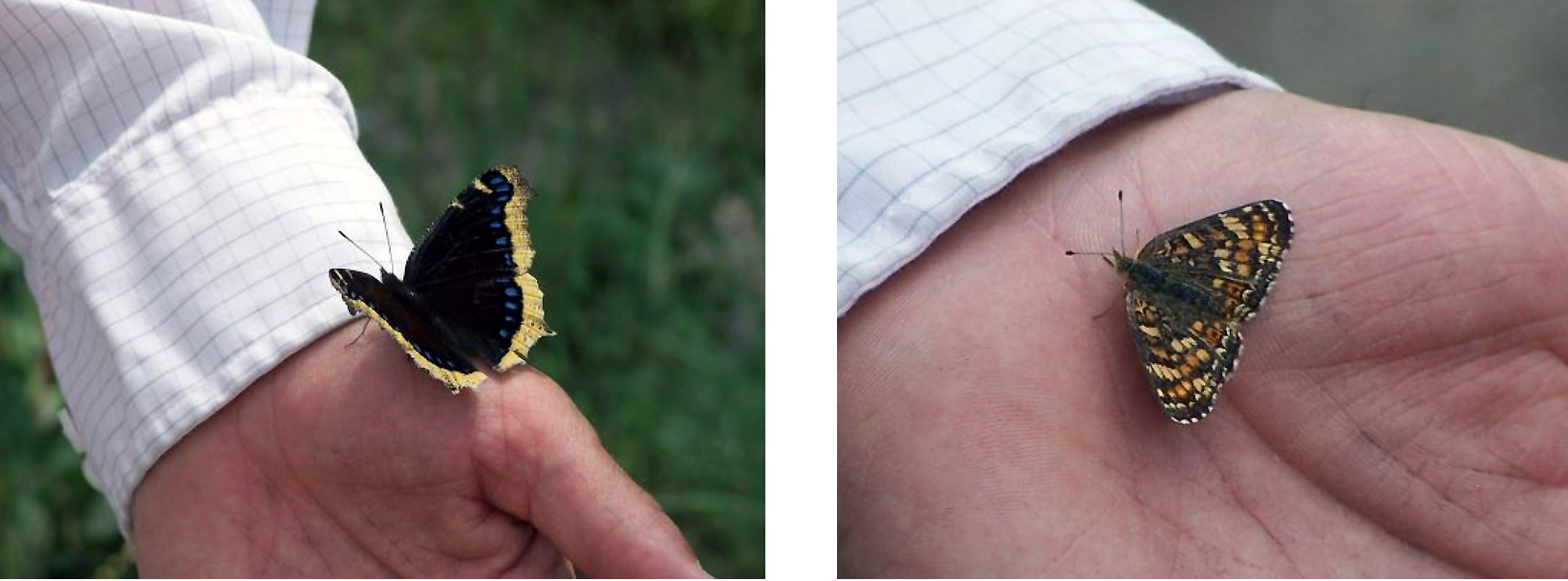 Sitting quietly with no motion. Courtesy photo
Sitting quietly with no motion. Courtesy photo
Butterflies are not the only animals that fly and rely on coloration and remaining still when on the ground. Can you easily see the grouse in the following picture?
Particular thanks to Dorothy Hoard and Steve Cary for the annual butterfly count.
 Where is the grouse? Courtesy photo
Where is the grouse? Courtesy photo

